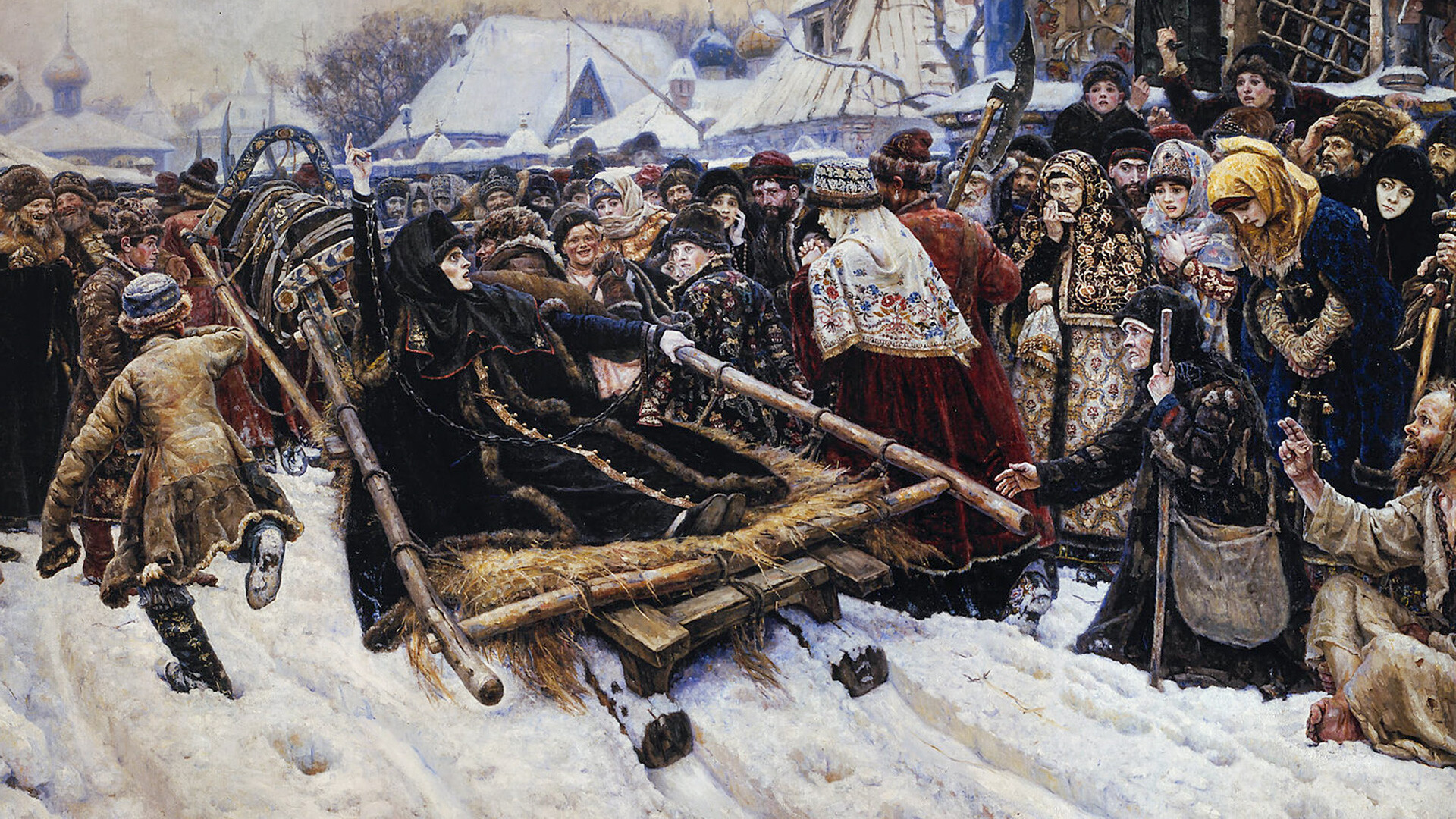
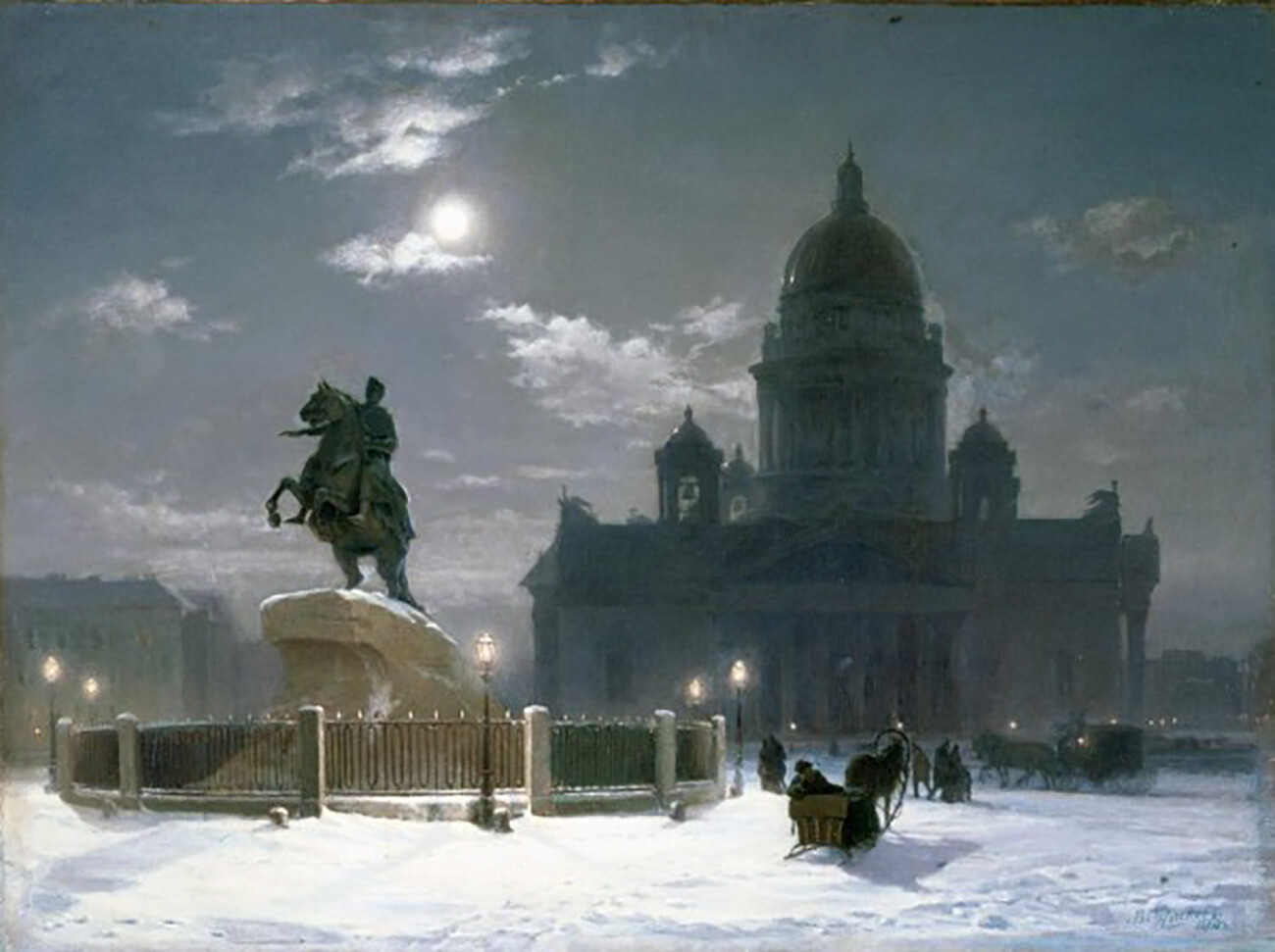
Surikov was born in Krasnoyarsk in 1848, and he enjoyed drawing from an early age. His family had no money for his education in the empire’s main art institution – the St. Petersburg Academy of Arts – so the boy graduated from a local district school and was employed as a scribe in the provincial administration. By a fortunate accident, a Krasnoyarsk art patron and gold industrialist, Pyotr Kuznetsov, saw his drawings and paid for Surikov’s further education at the St Petersburg Academy. Kuznetsov also purchased the first serious painting by the artist - “View of the Bronze Horseman on Senate Square in St. Petersburg.”
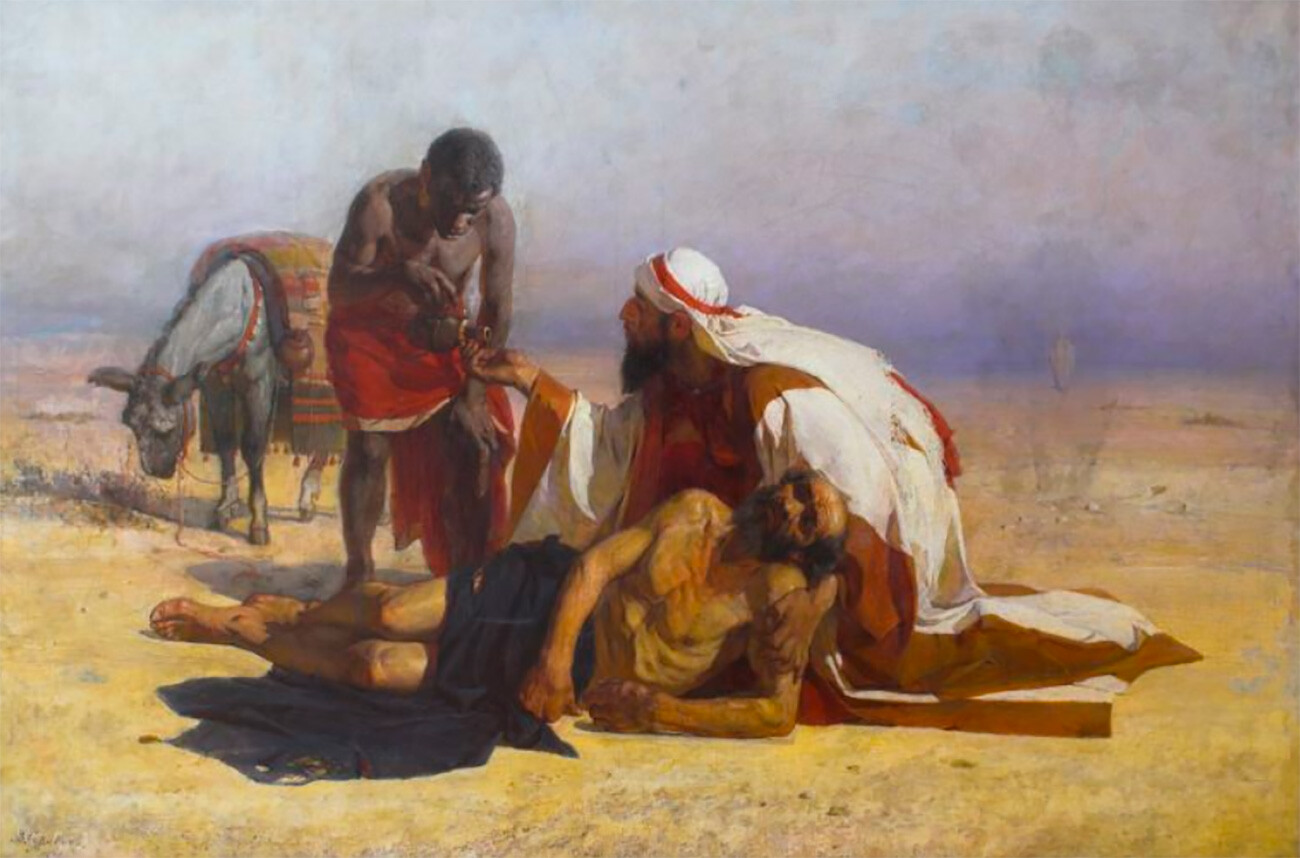
As was demanded from an Academy student, Surikov practiced painting Biblical narratives. The painting “The Good Samaritan” depicts a moment in a parable when a good Samaritan leans over a stranger in need in order to help him. Surikov painted the desert landscape based on his studies that were made in the scorching summer steppes of Southern Siberia.
For this painting, the artist received the gold medal of the Academy of Arts; and as a token of gratitude, he gifted this painting to his patron Kuznetsov.
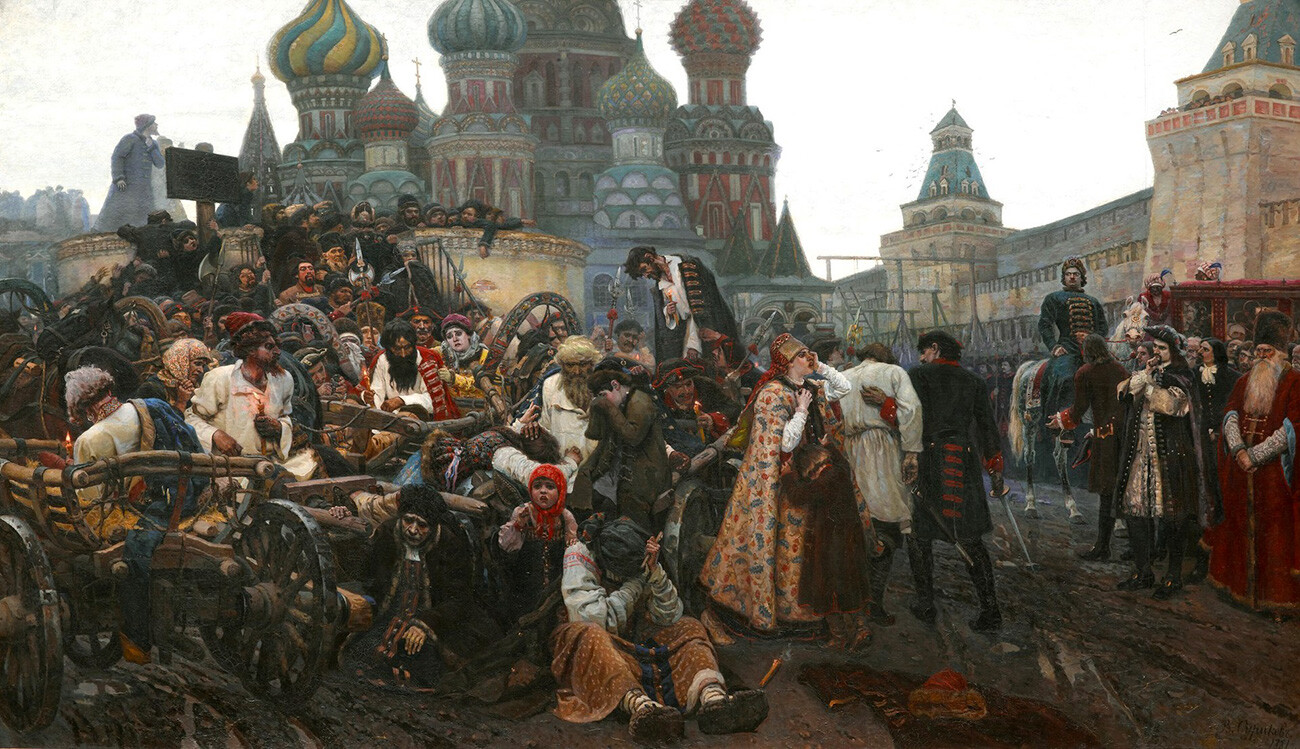
This massive painting (2.1 x 3.7 meters) was Surikov’s first work on the topic of Russian history, and it served as the artist's debut at the IX Peredvizhniki Exhibition, where it was immediately purchased by industrialist and collector Pavel Tretyakov.
Surikov depicted one of the tipping points of history. In autumn 1698, by order of Peter the Great, the streltsy, who had started a revolt, were executed. In the painting, the execution hasn’t started yet, but the gallows are already on Red Square in Moscow; the despondent streltsy, their wives and children are all struck with grief. In this painting, Ancient Rus’ is opposed to the new Russia that’s under the influence of Europe, and which has been wrought by Peter the Great.
The idea for this painting emerged after the artist’s first visit to Red Square – he vividly imagined this episode of history. The painting is rich in historical detail in terms of the costumes and objects around the characters.
Read an in-depth review of the painting here.
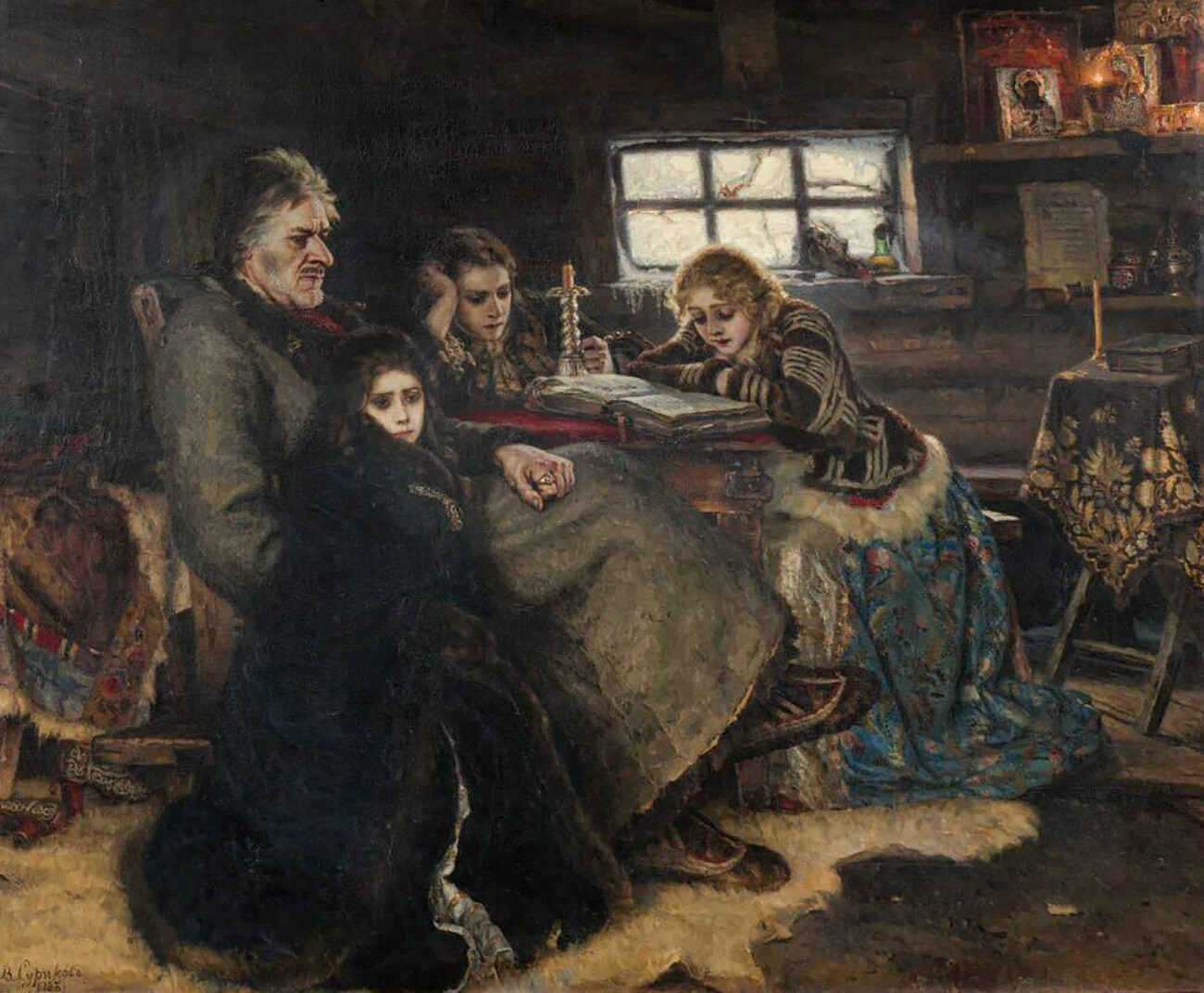
This painting was also received with awe at a Peredvizhniki exhibition, and once again Tretyakov immediately bought it. Surikov depicted yet another turning point in the history of Russia. Alexander Menshikov, once an influential associate of Peter the Great, suddenly found himself disgraced and in exile in Siberia after the death of the Tsar.
Originating from Siberia, Surikov was interested in this political drama and in Menshikov’s character, which remained unbroken despite his humiliation. In the painting, the official looks formidable and noble even while sitting in a small and modest hut in Siberia, unable to go outside due to the snow and harsh weather. The idea for this painting came to the artist very unexpectedly and suddenly one day, he was taking shelter from a storm with his family, and the image of Menshikov appeared before him vividly in the most minute details.
Surikov’s wife, Elizabeth, became the model for Menshikov’s daughter sitting at the main character’s feet.

Another critical episode in Russian history became the foundation for perhaps the most famous work by the artist. Since The time of his childhood in Krasnoyarsk, Surikov observed the life of the Old Believers and admired how their descendants who had been exiled to Siberia continued to lead their lives and how unshakable their faith was.
Boyarina Morozova was one of them. For his glorification of her life and courage on canvas, Surikov was even suspected of supporting the Church schism. The painting depicts the moment when even in chains Boyarina Morozova defiantly raises her hand with a two-fingered sign of the cross, a feature that specifically belongs to the opponents of the 17th century church reforms.
The artist looked for his models among the common people – in monasteries and at cemeteries, spending a lot of time on studies for his painting in order for it to be convincing. Surikov’s aunt served as a prototype for the portrait of Morozova.
This giant 3 x 5.8-meter painting was also purchased by Pavel Tretyakov. Today, this painting and its accompanying studies still occupy a special place in the State Tretyakov Gallery.
Read more about the painting here.

In 1878, the 30-year-old Surikov married Elizabeth Scharret. This charming noblewoman was 10 years younger and spoke Russian with a light French accent. The artist was madly in love but timid like a little boy. However, Elizabeth, who gave her husband two daughters, was in very frail health – she had rheumatism and heart disease. After 10 years of marriage she passed away, and Surikov fell into despair. According to his daughter’s recollections, he constantly cried and read the Bible; he also frequently went to the cemetery to visit her grave.
“The Capture of Snow Town” became the first painting created by Surikov after he overcame his depression. Bright and cheerful, it stands out among his grim historical paintings. He had observed the tradition of ‘the capture of the snow town’ in Siberia every year for Maslenitsa. So the topic was well known. For inspiration, the artist’s relatives and acquaintances became his models. The painting proved so successful that Surikov received a personalized bronze medal at the Paris International Exhibition of 1900.
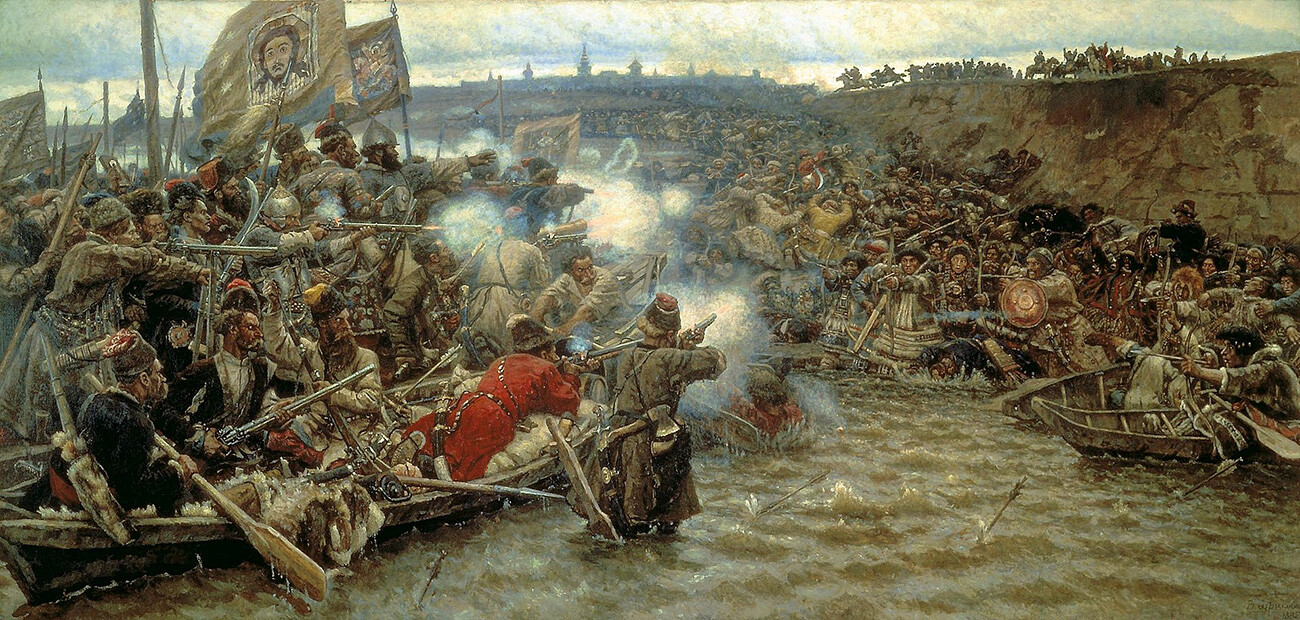
In this largest painting of his body of work, (2.85 x 6 meters), Surikov masterfully combined two of his main interests – the Cossacks and Siberia. In the Don region the artist looked for models for Cossacks, while in Khakassia he painted the Tatars. Finally, in the north of Siberia he found the perfect landscape for the painting.
The painting was presented at a Peredvizhniki exhibition, where it was highly praised by leading artist Ilya Repin, who noted its stunning effect on the viewer. Surikov had already arranged to sell the work to Pavel Tretyakov, but Nicholas II decided that “this painting has to become a national treasure and to be exhibited in a national museum”. So he purchased it for a record-setting price for Russian art – 40,000 rubles – and gifted it to the newly-founded Russian Museum in St. Petersburg. Surikov, however, gifted Tretyakov a smaller copy.

This painting was finished by the 100th anniversary of Suvorov’s famous campaign. The artist depicted the crossing of the Panix Pass in Switzerland. The 70-year-old commander looks like a true national hero on a white stallion, and his heroic soldiers energetically descend from the steep and precipitous mountains. This painting, which depicted the glorious military past in such a positive light, was also purchased by Nicholas II.
Surikov prepared thoroughly for this painting: he went to Switzerland to paint the drafts, and he studied military uniforms. A retired Cossack officer from Krasnoyarsk became the model for the image of Suvorov. And yet, in some aspects, the painting deviates from the historical truth. In particular, Vasily Vereshchagin, an expert of battle painting, noted that a horse wouldn’t ever approach a cliff so closely, and the soldiers would have unfixed their bayonets for the descent.
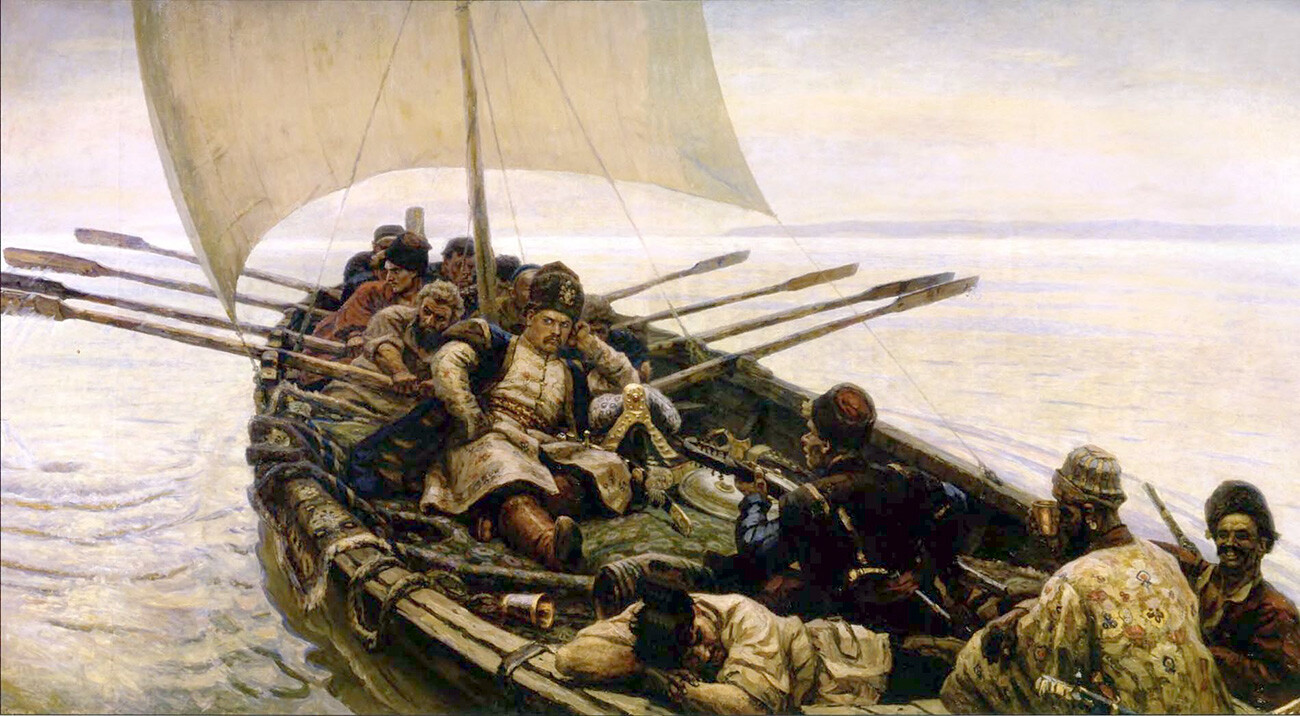
One of the last and most colossal paintings by Surikov depicts the young Cossack ataman Stepan Razin sailing along the Volga River after a successful raid. While his associates drink and revel, he sits deep in thought and sullen, surrounded by plundered treasures (allegedly, he ponders how to set the Russian people free).

Since Surikov originated from an old Cossack line, this topic was very important. It’s believed that the face of Razin is reminiscent of his self-portrait. In the first study for this painting Surikov also depicted a Persian princess, with whom Razin was returning from his raid. There’s an opinion among some scholars that the artist depicted his late wife in the image of the princess. However, in the end he decided against painting the princess. And when people asked him where she was in the painting, he only waved them off and, pointing at the ripples in the water, said that Razin had already drowned her.

Surikov was also inspired by the book of Ivan Zabelin, The Domestic Life of Russian Tsarinas (1869). The artist was impressed by the fact that women of the ruling family in Russia were true recluses who spent their entire lives behind their terem walls. And if there wasn’t a proper man for them to marry, then the only option was off to a nunnery. In this painting, the rosy cheeks of the tsarevna and her dress and kokoshnik, embroidered with gold and studded with gems, stand out sharply against the black robes of the nuns.
The artist’s granddaughter, Natalia Konchalovskaya (the daughter of artist Pyotr Konchalovsky and mother of directors Andrei Konchalovsky and Nikita Mikhalkov), posed for the painting.
A major exhibition of Vasily Surikov’s paintings for the artist’s 175th birthday runs inthe Benoit Wing of the State Russian Museum until May 13, 2024.
Dear readers,
Our website and social media accounts are under threat of being restricted or banned, due to the current circumstances. So, to keep up with our latest content, simply do the following:
If using any of Russia Beyond's content, partly or in full, always provide an active hyperlink to the original material.
Subscribe
to our newsletter!
Get the week's best stories straight to your inbox